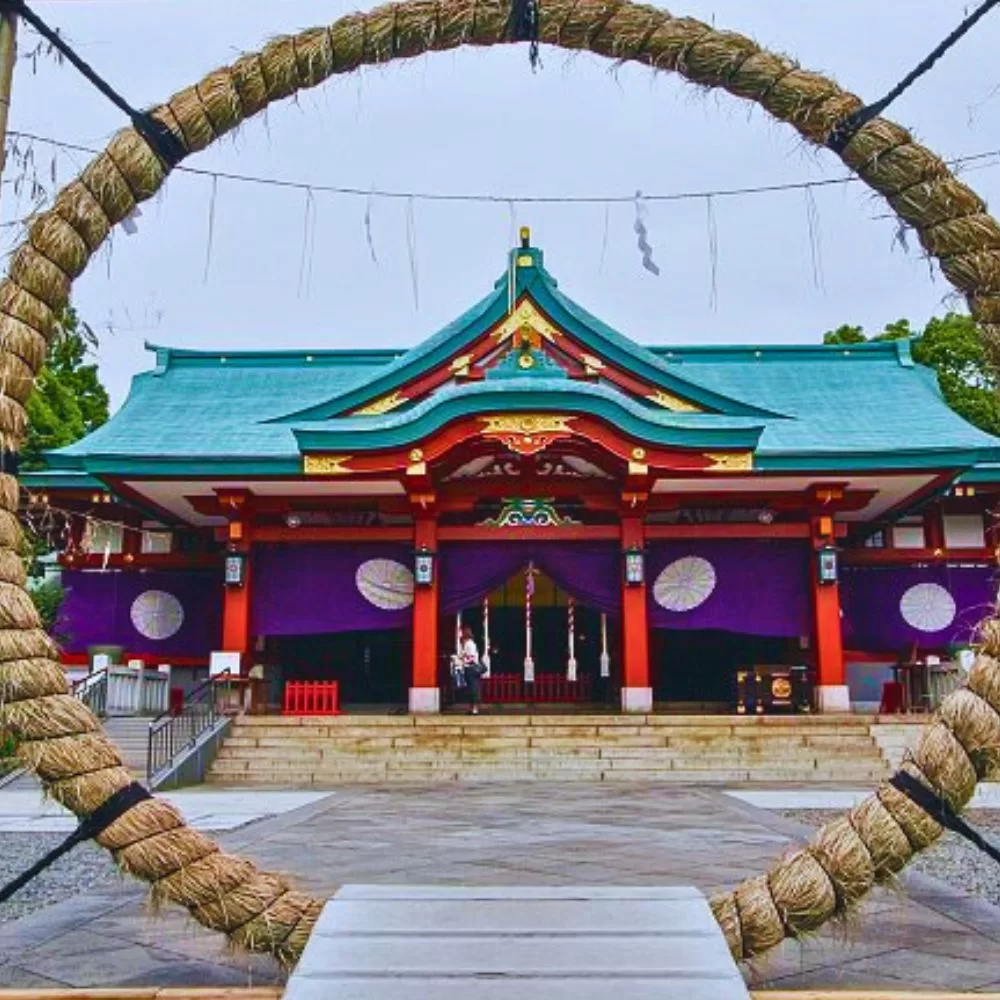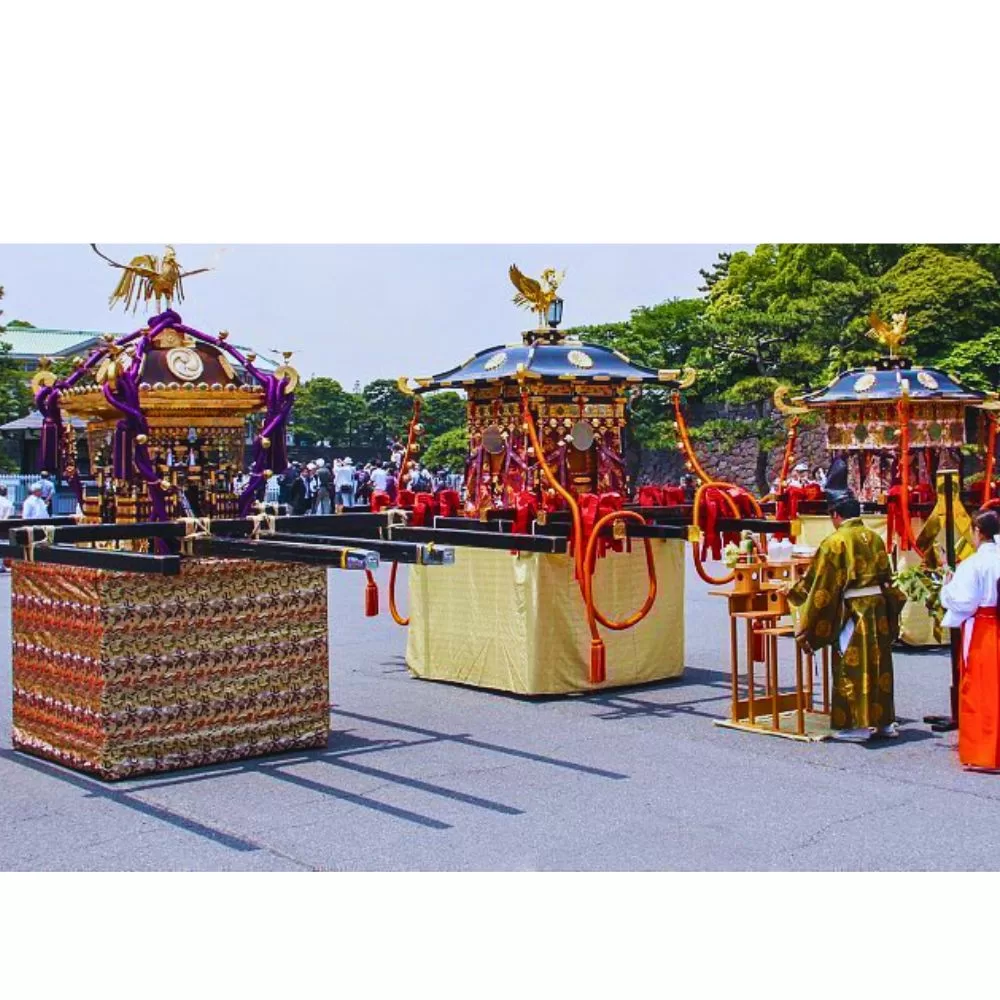Sanno Matsuri: A Spiritual Journey Through Tokyo’s Heart
The Sanno Matsuri Festival
Sanno Matsuri is one of the Tokyo Events in June that is a great way to experience the city’s traditional culture. The Sanno Matsuri festival features a mikoshi (portable shrines) parade, music, and dance performances.
Held in mid-June, Sanno Matsuri (山王祭, Sannō Matsuri), one of Tokyo’s three top-tier festivals, offers an extravagant display of heritage and tradition. Other notable festivals sharing this tier include the Kanda Matsuri and Fukagawa Matsuri. However, the full version of the Sanno Festival is only held in even-numbered years, alternating with the entire version of the Kanda Matsuri happening in odd-numbered years.

The festival’s main attraction is a parade that threads through central Tokyo over nine hours. The other highlight is a large straw ring stationed in Hie Shrine – a symbol of purification that visitors are welcome to step through.
Historical Significance
Sanno Matsuri not only carries religious significance but is also deeply rooted in Japan’s historical canvas, especially given Hie Shrine’s association with the Tokugawa family, which dominated Edo’s (ancient Tokyo) political landscape. During their rule, the festival was transformed into a celebration of the nation’s new political center and its leaders.
Since modernization, though, substantial changes have been made to the parade to minimize disruptions to regular traffic and business activities. Today, numerous roads along the parade route are only partially closed due to incoming traffic running alongside the festival procession.

Parade Grandeur
Despite its size reduction, Sanno Matsuri retains its grandeur – boasting bright costumes adorning about 500 participants and modestly proportioned floats. Three portable shrines (mikoshi) with kami (Shinto gods) inside emerge as parade favorites – carried through the city for divine blessings.
The day unfolds as follows:
–Early morning: The parade sets out from Hie Shrine
–Before noon: The procession halts at Tokyo Imperial Palace for religious ceremonies involving mikoshi
– Post ceremonies: The chief priest progresses towards offering prayers to Emperor and Imperial family
– Later: After a thirty-minute pause post-religious ceremonies, it advances past Tokyo Station before resting for another hour at Nihonbashi Hie Shrine.
– Afternoon: The parade passes near Nihonbashi Bridge and through Ginza’s heart before ending at Hie Shrine

Cultural Showcase during Sanno Matsuri
Over an extended period of 11 days, Sanno Matsuri serves up a feast of cultural spectacle. Among multiple events to catch sight are traditional Japanese Shinto music-and-dance performances alongside Sanno drum performances.
The festival further embraces a historically crucial ceremony where prayers are conveyed to secure peace within Tokyo and maintain safety around the Imperial Palace grounds.
Parade Route Details for Event Spectators
Visitors exploring Hie Shrine early morning might spot an erected large straw ring within the shrine grounds – considered a purifying walk-through ritual. Those traversing around Yotsuya train station might get glimpses of festive processions passing by Yasukuni Shrine before approaching the Tokyo Imperial Palace location.
Convenient transport options promise accessibility: Akasaka-netsuke Station on Ginza & Marunouchi lines or Tameike-sanno Station on the Ginza line or Kokkai-gijido-mae on Chiyoda or Marunouchi lines all offer proximity to Hie Shine.
To truly grasp this festival’s essence, one must invest time into witnessing each event—marking dates from June 7th until June 17th would be ideal. Historically rich and vibrantly decorated, Sanno Matsuri promises an immersive journey through Japanese tradition.
After enjoying the Sanno Matsuri, you could head to the Tsukiji Shishi Matsuri to experience a different side of Tokyo’s culture. While the Sanno Matsuri is a great way to experience the city’s traditional culture, the Tsukiji Shishi Matsuri is a great way to experience the history and culture of the Tsukiji district.